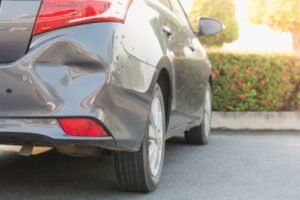
Hit and run can be charged as either a California misdemeanor or a felony depending on:
- the facts of the case, and
- what Vehicle Code section the offense is charged under.
Vehicle Code 20002 VC is the California statute that defines the crime of misdemeanor hit and run. This section makes it a crime for a person to:
- fail to stop his vehicle,
- after being involved in an accident,
- when the accident resulted in some type of property damage.
A violation of this statute is charged as a misdemeanor and is punishable by imprisonment in county jail for up to six months.
Vehicle Code 20001 VC is the California statute that defines the crime of felony hit and run. This section makes it a crime for a person to:
- flee the scene of an accident,
- in which another person has been injured or killed.
A violation of this code section is a wobbler offense, meaning that it can be charged as either a misdemeanor or a felony. A conviction is punishable by up to four years in state prison.
What is the offense of misdemeanor hit and run under Vehicle Code 20002?
Per VC 20002, a prosecutor must prove four things in order to successfully convict a person of misdemeanor hit and run. These are:
- while driving, the defendant was involved in a vehicle accident,
- the accident caused damage to someone else’s property,
- the defendant knew, or reasonably should have known, that he had been involved in an accident that caused property damage, and
- the defendant willfully failed to stop at the scene of the accident or failed to provide the owner of the damaged property with his identifying information (e.g., his name and current address).
Someone commits an act “willfully” when he does it willingly or on purpose. It is not required that he intend to break the law, hurt someone else, or gain any advantage.
Note that in providing identifying information, an accused must have provided enough information so that the owner of the damaged property understood that the accused was driving the vehicle
A violation of this code section is always charged as a misdemeanor.
The crime is punishable by:
- imprisonment in county jail for up to six months, and/or
- a maximum fine of $1,000.
What is the offense of felony hit and run under Vehicle Code 20001?
Per VC 20001, a prosecutor must prove four things in order to successfully convict a person of felony hit and run. These are:
- while driving, the defendant was involved in a vehicle accident,
- the accident caused injury or death to someone other than the defendant,
- the defendant knew, or reasonably should have known, that he had been involved in an accident that injured or killed another person, and
- the defendant willfully failed to perform one or more of the following duties:
(a) to immediately stop at the scene of the accident,
(b) to provide reasonable assistance to any person injured in the accident, and/or
(c) to give to the person injured, or any police officer at the scene of the accident, his personal information (e.g., name and current address).
Someone commits an act “willfully” when he does it willingly or on purpose.
A violation of this statute is a wobbler. This means it can be charged as either a misdemeanor or a felony depending on:
- the facts of the case, and
- the criminal history of the defendant.
Note that the prosecutor has the two different options in charging this offense even though it is referred to as “felony” hit and run.
If charged as a misdemeanor, the crime is punishable by:
- imprisonment in county jail for up to one year, and/or
- a maximum fine between $1,000 and $10,000.
If charged as a felony, the offense is punishable by:
- imprisonment in the state jail for up to four years, and/or
- a maximum fine between $1,000 and $10,000.
